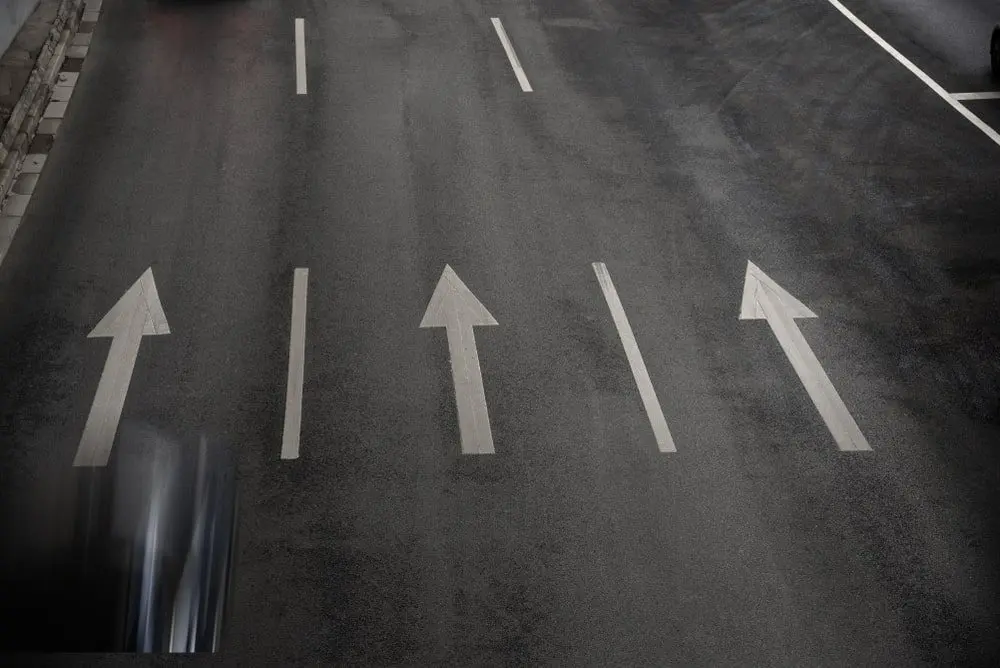
At Bill Plant Driving School, we teach people everything they need to know to be safe and confident on the road. There’s only one place to begin, though, and that’s with the basics.
We’ve already covered how to start a car, move off and stop and how to set up your car seat. This time, we’ve set out a detailed guide on how to safely change lanes so that you’ll be fully prepared once you get behind the wheel.
Changing lanes may seem straightforward, but you might have a few questions about completing the process safely.
When should you change lanes? How do you do it safely? What are the best techniques?
So, start your engines and let’s jump right in.
When to change lanes
You will need to change lanes in many different situations when driving. If you know how to identify when you need to perform a lane change, this can help you think ahead and will make you a safer driver.
- Overtaking – When you’re behind a vehicle that is moving slower on any road, including motorways or dual carriageways, you can overtake when it’s safe, legal and necessary. Make sure you move back to the left lane once you’ve overtaken the other vehicle.
- Exiting Motorways and Dual Carriageways – Apart from when overtaking, you may need to change lanes on a motorway or dual carriageway to reach an exit. You will need to allow yourself enough time to move to the correct lane before exiting the road, or you’ll be stuck on the motorway or dual carriageway longer than anticipated.
- Approaching Junctions – When you’re approaching a junction, you must be in the correct lane for the direction you want to go. You must be in the right-hand lane if you plan to turn right. Change lanes in good time, as it might not be possible once you’re close to the junction.
- Roundabouts – Which exit you intend to take on a roundabout will determine which lane you need to be in. Usually, you will stay in the left or centre lane if your exit is in the first half of the roundabout. You will move over to the right-hand lane for exits in the second half. Road markings and road signs will give more detailed information.
- Wrong Lane – Don’t panic if you find yourself in the wrong lane; this is common among people learning to drive. It is often safest to continue ahead until you find another junction or exit that puts you back in the right direction, however if there is a chance to move to the correct lane safely, then take it.
How to change lanes properly: step-by-step

Now that we’ve covered when you’ll need to change lanes, we’ll review the best and safest ways to avoid causing danger to yourself or other drivers.
The standard method you should use is known as the MSM routine, which stands for mirrors, signal and manoeuvre. This is an easy way to make sure you change lanes safely every time.
1. Prepare to change
No matter the reason for changing lanes, you’ll need to think ahead and be prepared. If you’re approaching a roundabout, overtaking, approaching a junction, or taking an exit on a motorway, you’ll want to be in the correct lane as early as possible.
Changing lanes quickly at the last second can be hazardous and could lead to collisions with other vehicles. It can also make you stressed and less focused on what’s happening around you.
To ensure you’re well-prepared, look for traffic signs and road markings that indicate which lane you need to be in for your destination. This will give you enough time to calmly and safely change lanes.
It’s also good to plan your route before you start your journey to know when you’ll be approaching junctions and roundabouts. A Sat-Nav is a helpful tool for this, as it will tell you when to change lanes well in advance – however remember that ultimately, you’re in charge of your own safety!
2. Check your mirrors
Once you’ve prepared to switch lanes, it’s now time to check your interior mirror and side mirror. This is the first stage of the MSM routine. You’ll always need to check your rearview (interior) mirror when moving to a new lane to see what’s happening on the road behind you.
You’ll then need to look in your right-hand mirror if you’re moving right or your left-hand mirror if you’re moving left to identify any hazards.
Once you’ve checked your mirrors, it’s crucial that you glance over your shoulder before changing lanes for vehicles that may be alongside you to ensure that no overtaking vehicles have moved into this blind spot. In particular, you’ll need to look out for motorcyclists and cyclists as they can be harder to notice.
You shouldn’t change lanes if it will cause other drivers to have to brake suddenly or swerve to avoid you. If you see that another car is moving too fast, or if the traffic is too heavy, simply wait until it is safe for you to perform your manoeuvre whilst keeping a safe distance to the vehicle in front.
3. Signal intention to change
After checking your side mirrors and blind spots, you’ll need to move onto the second stage of the MSM routine, which is signalling to other drivers that you intend to change lanes.
Once you’re certain it’s safe to move, you’ll turn on either your left or right-hand indicator to let other road users know your intention.
It also means they can adjust to give you enough space to perform your manoeuvre safely. Signalling your intentions doesn’t mean you have the right of way over other road users, so only move if it’s safe and legal to do so.
If you have to abort your lane change due to a potential hazard, such as another vehicle moving too fast, cancel your turn signal. You’ll then need to perform your mirror and blind spot checks again before turning your indicator back on and attempting to move.
4. Change lanes
Now that you know it’s safe to move and you’ve signalled your intentions, you’ll need to perform the third stage of the MSM routine, which is performing your manoeuvre.
You’ll need to have a grip on the steering wheel and make sure that you maintain your speed as you begin to move over. Take your time and calmly steer your vehicle into the correct lane.
Once you’re correctly positioned in the lane you’ve just entered, turn off your indicator so that other road users know that you’ve completed your manoeuvre.
Common mistakes to avoid
- Poorly adjusted mirrors – If your mirrors are correctly adjusted, they will cover all areas except for the blind spot. If they’re not, you won’t be able to see other road users properly, and this could lead to a collision. If you need extra help on how to adjust car mirrors for maximum visibility, take a look at our guide.
- Moving across too early – Never change lanes if you notice that the vehicle behind you has started to overtake you or if they have already begun changing lanes.
- Reducing your speed before changing lanes – You’ll always need to maintain your speed while moving to a new lane. If you slow down as you do this, you will disrupt other road users.
- Leaving your indicators on – If you forget to turn your indicators off once you’ve completed your lane change, this will confuse other drivers.
Top tips for changing lanes safely
- Be prepared and plan ahead
- Always follow the MSM routine
- Maintain speed when changing lanes
- Be patient. Always choose safety over speed
If you’re ready to learn to drive, Bill Plant Driving School is ready to teach you. Our expert instructors know that taking your first driving lessons can be daunting, and we’re here to guide you through every step.
We teach thousands of people each year and help new drivers get on the road every single day. There’s never been a better time to take that step and get behind the wheel. Bill Plant Driving School will take the stress away and get you driving safely and confidently.
If you’d like to discover more posts from ‘The Basics’ series, discover how to set up your car steering wheel and everything you need to know about car gears.

